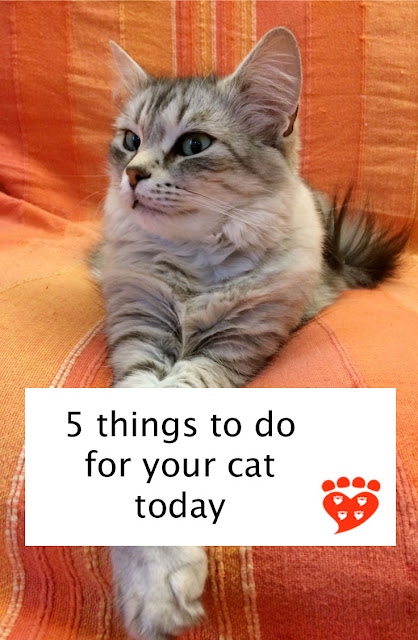 |
| Photo: Sarai da Silva / Shutterstock |
A new study by Dr. Helen Vaterlaws-Whiteside and Amandine Hartmann (Guide Dogs National Breeding Centre) (2017) tests an improved program for socializing puppies in the nest from 0 – 6 weeks. The program provides additional socialization in a way that is relatively cheap, easy to implement, and designed to fit with what science tells us about the development of puppies.
In comparison to puppies receiving the regular socialization program, the puppies who got extra socialization got better scores in tests at 6 weeks old. By 8 months of age they were less likely to have separation-related behaviours, general anxiety, be distracted, or have body sensitivity.
In other words, the extra socialization brought important benefits for their behavioural welfare as young adult dogs. These results will be of particular interest to those who breed and train service dogs, but they are important for anyone who cares about dogs – especially those looking to get a puppy.
Dr. Vaterlaws-Whiteside told me in an email,
"The program is designed to provide a highly effective socialisation experience for our puppies that is low cost, quick and easy to complete. The program of specific exercises mirrors puppy physiological and behavioural development and is proven to have a lasting improvement on behaviour.
"Dogs who do not receive this kind of socialisation as puppies can grow up to be anxious and scared. Therefore, positive early life experiences are critical in helping puppies grow up to be confident, content companions. This program can be used by working dog organisations, pet dog breeders and animal shelters."The puppies who took part in the study are part of the Guide Dogs for the Blind breeding program. All of the puppies follow a standard program, spending the first 6 weeks in a breeding facility where they experience identical conditions and then having the same socialization program for the first year of their life. Therefore this is the ideal environment in which to test a new, additional, socialization program.
The extra socialization activities took place five days a week during the first 6 weeks. It was designed to include interactions with people and animals as well as visual, auditory and tactile stimulation. In the first week, it took 5 minutes per puppy per day, building up to 15 minutes per puppy per day in weeks 5-6.
Examples of the extra socialization include stroking the puppy gently with the fingers, a towel, and rubber gloves; making a cell phone ring near the puppy; gently examining the puppy’s ears and teeth; and encouraging the puppy to do things like climb over an obstacle or come through a doorway.
All of this was done in a way that was fun for the puppy and the researchers made sure the puppy was comfortable at all times.
The researchers have made a video called play builds confident puppies to explain their findings.
How did they conduct the study on early puppy socialization?
Six litters of puppies took part. Half the puppies in each litter received the extra socialization and half had the standard program. To make sure it wasn’t simply extra time with a person that was causing the results, the puppies in the standard program had someone spend the equivalent time sitting with them and only interacting a little with the puppies that wanted to.
The puppies were either Labrador Retrievers, Golden Retrievers, or Labrador-Golden crosses. They were assessed at 6 weeks old, and at 8 months old their handlers completed a survey on their behaviour.
At 8 months, the handlers’ responses showed that puppies who had the extra socialization scored better for separation-related behaviour, distraction, body sensitivity and general anxiety. There was no difference for trainability or energy.
These results suggest they will make better working guide dogs, but more research (and time on the job) is needed to assess this.
The scientists write,
“The additional age-specific stimulation received by puppies given the extra socialization during this study provided increased physical contact, mental challenges and extensive positive interaction with people away from the litter. These stimuli could be considered to be mild stressors and may help explain the reduced anxiety and distraction related behavior observed in the eight-month handler questionnaire.”The very short periods of time that puppies in the extra-socialization program spent away from the litter and with a person may have helped them to become more resilient to being taken away from the litter, which may in turn have made them more resilient to being left alone. This could account for the differences in scores for separation-related behaviours.
What’s especially remarkable about these results is that the puppies in the standard group were already getting an excellent socialization program that included lots of opportunities to interact with different stimuli. One of the things that is different about the enhanced program is each puppy got to have that kind of interaction away from the other puppies, just in the presence of a person.
What does it mean for dog owners?
This study builds on the existing research on the sensitive period for socialization in puppies and on what we know about puppy development. It has implications for all dog owners because it shows that extra socialization brings additional benefits. If you are getting a puppy, socialization in the home of the breeder makes a difference to the future behaviour of the puppy.
Sadly, many puppies come from places where they do not get good (or any) socialization. This is thought to be one of several reasons why puppies from pet stores are more likely to have behaviour problems such as aggression, fear of dogs, separation-related behaviours, sensitivity to touch and house-soiling.
So do not buy a puppy from a pet store, or from the internet where the puppy will be brought to you. You need to see the puppy interacting with the mom. And you should ask the breeder what they are doing to socialize the puppy. This should include lots of short, positive experiences with a wide range of different stimuli.
"positive early life experiences are critical in helping puppies grow up to be confident, content companions. This program can be used by working dog organisations, pet dog breeders and animal shelters."
Animal shelters and rescues also sometimes have puppies, and you should ask the same questions about socialization.
Of course, you still need to continue to socialize your puppy after you bring it home. The sensitive period for socialization ends at around 12-14 weeks, although it may be earlier in some breeds. Remember that socialization means positive experiences, so never force your puppy into an interaction and always give them a choice.
Summary of the puppy socialization study
This study shows that additional puppy socialization from 0-6 weeks, on top of an already excellent socialization program, can make a big difference in terms of the dog’s behaviour at 8 months of age.
The paper contains details of the extra socialization program including a table showing what happened and when. This makes it easy for anyone else who wants to follow the program. Breeders of pet dogs, working dog programs and animal shelters in particular may wish to take a look. The paper can be downloaded for free until 15th December via this link.
Jan 2018 update: Details of the program are now available in a free app, Socialization for Success, which provides a week-to-week guide to what to do and the science behind it.
You can follow The Guide Dogs for the Blind Association (UK) on twitter and Facebook.
You can learn more about the classic research into the socialization period in my post, Why you need to socialize your puppy. And if you’d like to know why we call it a sensitive period or how kittens compare to puppies, you might like to read the sensitive period for socialization in puppies and kittens.
For more stories like this, subscribe to Companion Animal Psychology.
Reference
Vaterlaws-Whiteside, H., & Hartmann, A. (2017). Improving puppy behavior using a new standardized socialization program. Applied Animal Behaviour Science, 197, 55-61. https://www.sciencedirect.com/science/article/abs/pii/S0168159117302320#!
Companion Animal Psychology is a participant in the Amazon Services LLC Associates Program, an affiliate advertising program designed to provide a means for sites to earn advertising fees by advertising and linking to Amazon.com and affiliated sites.
Companion Animal Psychology is also a participant in the Etsy Affiliate Program, an affiliate advertising program designed to provide a means for sites to earn advertising fees by advertising and linking to Etsy.com.














